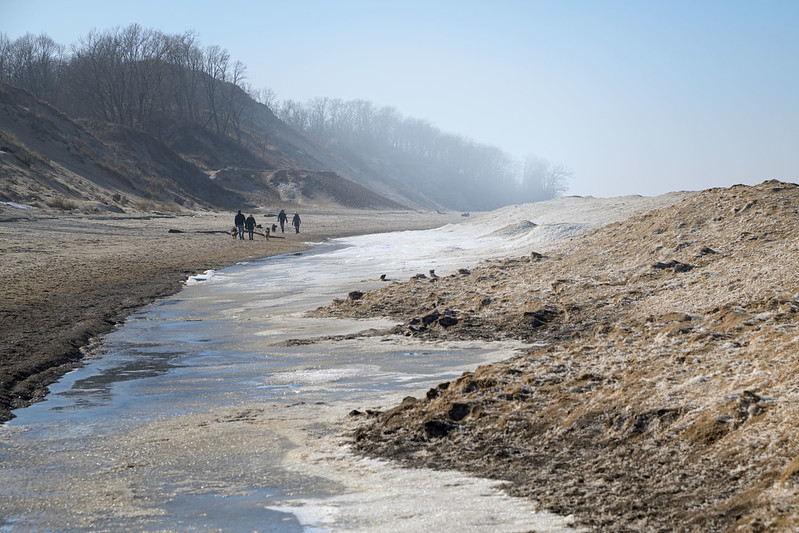














A bit more than halfway from Mattiessen's Cedar Point to Lake Falls is a small but dramatic waterfall cascading into Giant's Bathtub, a small pond on the upper dells. In times of high water, it's a bit difficult to reach without getting wet, but it's generally well worth the trek. If your balance is good, you can stay dry by stepping on rocks, logs, or whatever happens to be in the stream at the moment. This waterfall can be reached from an access upstream as well as downstream, but in both cases, you need to walk through the stream at some point.
The best way to see this waterfall, I think, is from the downstream approach, from Cedar Point. The site reveals itself as you walk up to it, rather than seeing it from the top when you're almost falling over it. Heading to the Lake Falls access, you'll need to walk through the stream at the very top of the waterfall. This can be a bit tricky if the surface is icy or otherwise slippery - one slip and you can end up falling down into the falls, and into Giant's Bathtub. Be prepared to get your shoes wet as you walk through the 6 to 8 inch deep running stream.













